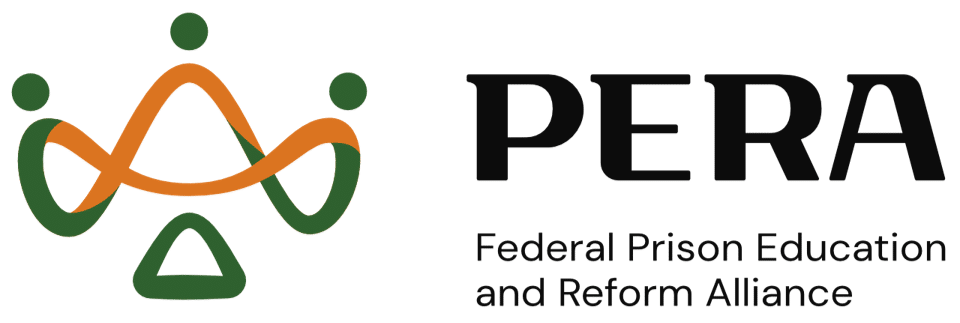A lot of prison-reform advocates are celebrating right now, after the U.S. Senate passed the Federal Prison Reform Act, sending it on its way to the president for signature. Wins in this space are rare these days, so we get it. But that enthusiasm should be tempered with caution and a little skepticism.
For decades, a lack of transparency and accountability in the federal prison system has allowed abhorrent conduct to become the norm. Look no further than the recent closing of the Federal Correctional Institution (FCI) for women in Dublin, California, nicknamed “the rape club,” which eventually led to the arrest and recent sentencing of the warden for sexual abuse. Then there’s the Atlanta U.S. penitentiary, where a congressional investigation substantiated reports by the Atlanta Journal-Constitution of drug trafficking, dozens of incidences of violence and the “horrific” conditions for pretrial detainees. BOP insiders had been aware of these and other abuses for many years. The most recent lack of humanity coming under the radar of the GAO and DOJ-IG is occurring daily at FCC Hazelton (WV) and USP Atwater (CA).
We are now living the culmination of decades of lax oversight, transparency and accountability which enabled the coverups of crimes, abuses, and woefully inadequate physical and mental health care. The organizational culture, which was considered somewhat of a model long ago, has morphed into a behemoth lacking accountability.
So, it may surprise you that I am not joining the celebration of yesterday’s Senate approval of BOP oversight legislation. The fact is this: The Federal Prison Oversight Act relies primarily on the Department of Justice, both through IG inspections and an ombudsman’s office, to bring accountability to the out-of-control BOP. And the DOJ’s own culture is a major stumbling block. Let’s unpack just how this new act proposes to rein in the BOP and restore real accountability:
OIG inspections
The act charges the the DOJ’s Inspector General with authority to conducted periodic, unannounced visits to BOP facilities, with frequency determined on the institution’s “risk score” (based on a to-be-determined list of prison characteristics/conditions). The resulting reports will be released to relevant Congressional oversight committees, as well as made available to the general public. The BOP is required to respond to each report with a corrective action plan, and the IG will monitor compliance.
But…if history is a teacher, the BOP will need more than an increase in graded audits and monitoring without teeth. The IG already inspects federal prisons, makes recommendations and monitors “compliance.” And it also regularly posts on its website the myriad actions that are neglected, ignored or partially completed. (See the most recent such report.)
Why does anyone think future IG inspections will result in any more actual reform? What’s needed is the active engagement of independent policy and process experts, as well as people with actual “lived experiences,” both who have been incarcerated in the system and have worked as non-administrative staff as BOP case managers, etc. In addition, non-compliance with identified “corrective actions” must come with a price. As the old adage goes, “what’s incentivized gets done.”
Creation of an ombudsman’s office
Within a year of the enactment of the Federal Prison Oversight Act, the U.S. attorney general must appoint an ombudsman who may receive complaint about the prisoner mistreatment or staff misconduct directly from incarcerated persons, family members, other advocates, members of Congress, or a member of the judicial branch of the Federal Government regarding issues that Congress, etc. The ombudsman will investigate the complaints and report its findings to the submitter and, if wrongdoing is found and no action is taken by the BOP, report the situation to the attorney general and the appropriate Congressional committees.
That sounds good. But the proverbial devil is in the details. Chances are, the chosen ombudsman will be the typical administrative “insider” from the Beltway, dooming the prospects for actual justice from the get-go. Here are some critical questions that also must be asked and answered:
- How robustly will the ombudsman’s office be staffed and funded?
- What mechanisms will be put in place to prevent the ombudsman’s analysts from being co-opted by the entrenched staff and culture? Case in point: BOP Director Colette Peters recently appointed her own network of reginal ombudspeople, and we have tried them out. While responsive and sounding initially sympathetic, they – to date – have mostly parroted the response they receive from prison staff. And non-BOP DOJ staff are not much different. Recently, the U.S. Attorney’s Office in West Virginia set up a “tip line” for individuals houses in the federal Hazelton complex, rightly known as Misery Mountain. However, when adults in custody at Hazelton were blocked from submitting their reports from inside, no action was taken.
- What mechanism/channel will be set up to ensure that incarcerated people can reliably and confidentially submit reports of wrongdoing directly to the ombudsman? And the receive responses? This is not addressed in the act but is critical.
PERA strongly supports the call for more BOP oversight. However, we do not believe oversight will improve facility culture unless the agency holds its leaders and staff across its myriad institutions accountable to follow and broadly apply the many sound and progressive policies already on the books that are disregarded daily without accountability. (At Hazelton, our correspondents from inside tell us that when they point out policy violations, the response is “This isn’t the BOP. This is Hazelton.) Policy compliance, along with a focus on a reset of BOP culture to emulate models like Restoring Promise are necessary companions to the oversight bill.
Oversight based on sound correctional practices that place treatment and rehabilitation on equal footing with incapacitation will result in safer facilities and a more desirable working environment for prison staff, as well as a more nurturing environment and lower recidivism for adults in custody. PERA is dedicated to advancing this cause. Join us as we educate and support the federal justice community on this and other prison issues.



